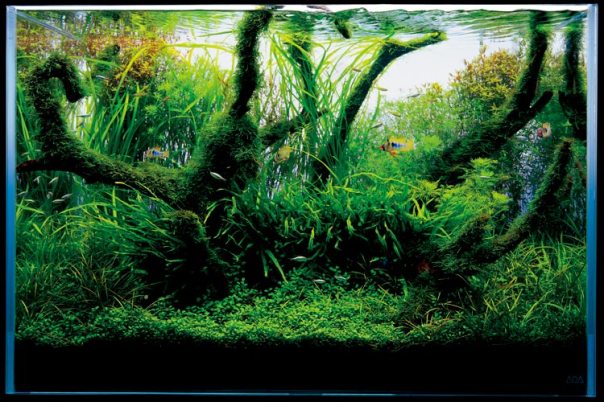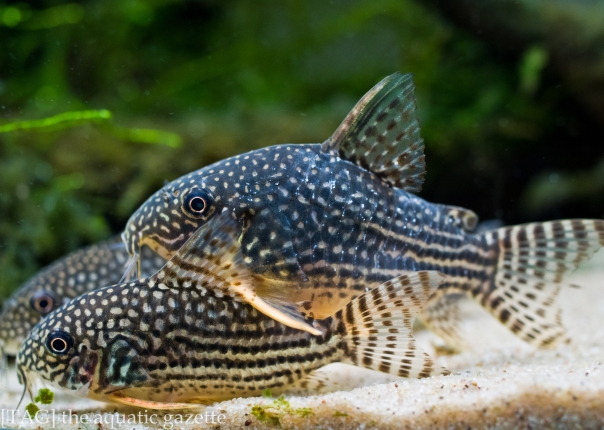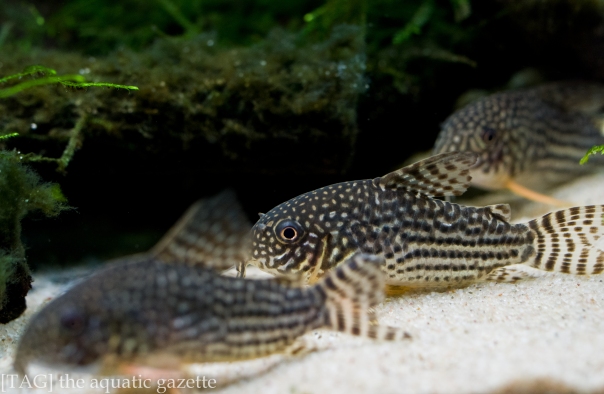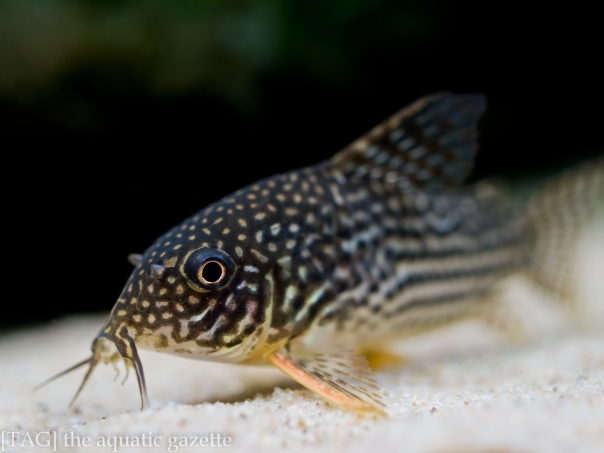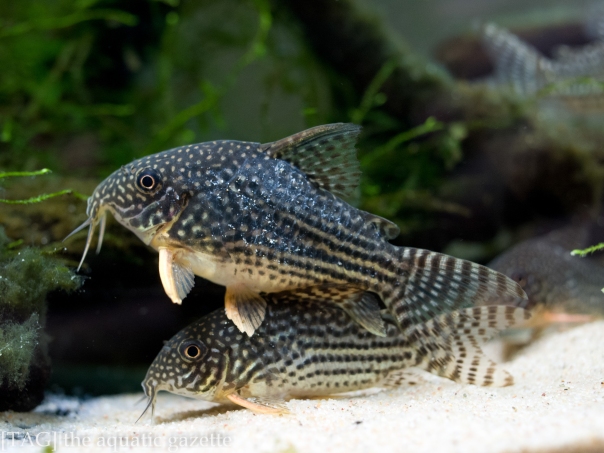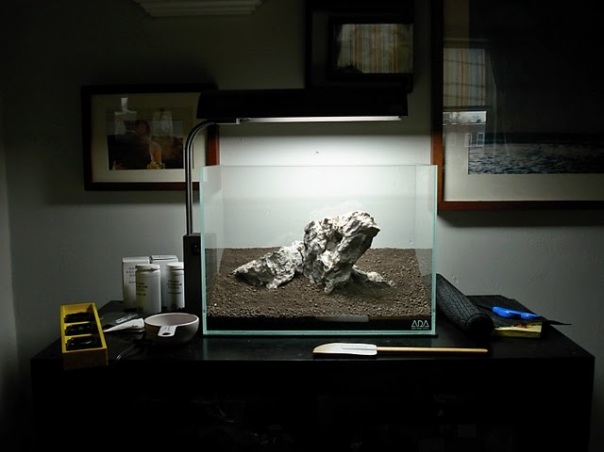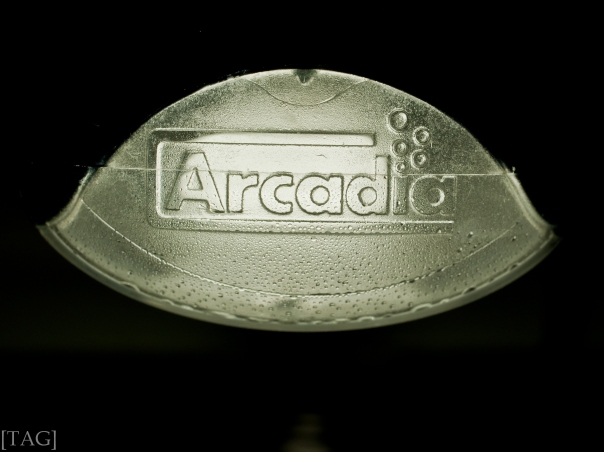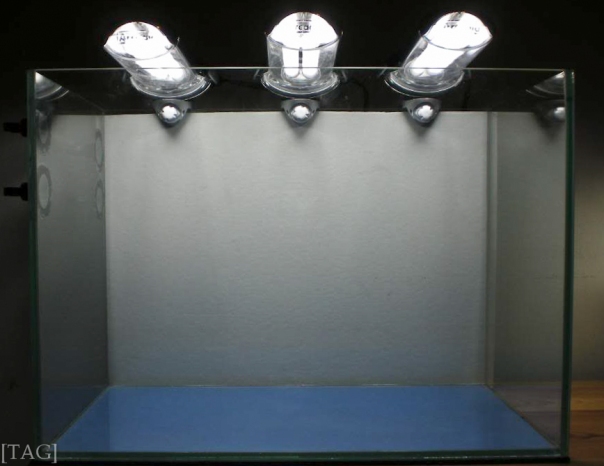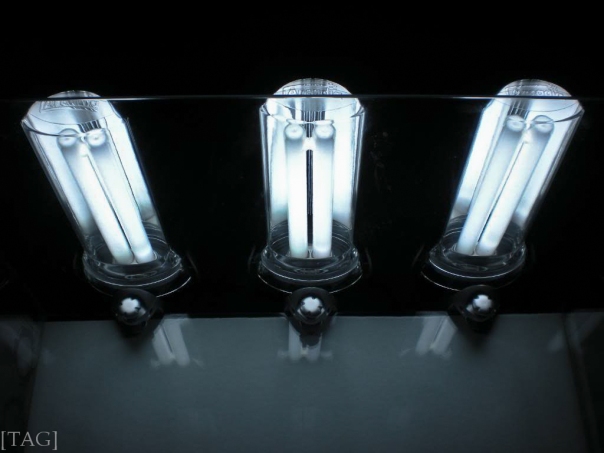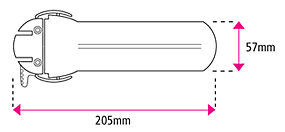Not a small number of us started this hobby after viewing a picture of a Takashi Amano aquascape on the internet. When Takashi Amano first introduced the Nature Aquarium style, it took the aquascaping community by storm, for aquascaping with nature as an inspiration was not new, but never at this level of skill and authenticity. One American publication went as far as to place a note beside the first published pictures of his aquascapes to inform readers that these were man made, and not pictures of nature.

The Japanese are master gardeners, practicing the art since the 6th century. From the late 12th century to the 19th century, Japanese gardens became a high art form, having been influenced by the Japanese Tea Ceremony and their Zen beliefs. By that time, Japanese gardens were known as places for contemplation, meditation, enjoying the wonders of nature and as a place for meaningful ceremonies. Seyemon Kusumoto wrote that the Japanese are best at ‘generating nature’s handiwork in a limited amount of space’. Japanese gardens became so beautiful that they were imported overseas, there are now 65 notable gardens found outside of Japan.

- Japanese Garden | Erinji
Similar to the Japanese garden, the concept for the Nature Aquarium style is to replicate nature within a designated space, establishing an aquascape that learns from nature. The aquascaper studies how nature compose itself and incorporates that knowledge. Nature Aquarium aquascapers often browse landscape, aquatic nature or biptope pictures for inspiration before composing their layouts. This mimicking of nature has been termed by ADA as “Natural Expression”. In ADA’s literature, natural expression can be achieved by; the attaching of flora to driftwood and rocks, mixed planting of flora, the creation of shadowy areas, different coloration of flora, different flora layers and the use of stem plants to express an aquascape that is subjected to bright sunlight.
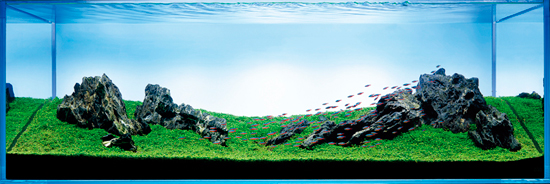
As the Nature Aquarium style is a natural expression of nature, and nature by itself is diverse and varied, many different variations of the Nature Aquarium style exist. These variations can be categorised into two sub-styles, the driftwood style and the iwagumi style.
The driftwood style is a style that imitates the freshwater aquatic environment. In these environments, there is an abundance of driftwood which provides refuge and food for aquatic fauna. In an Nature Aquarium aquascape, the use of driftwood and rocks are termed as ‘hardscape’, this hardscape forms the foundation of the aquascape and should always be established before any flora is planted in the substrate. The Nature Aquarium style also introduced the use of flora that grows on hardscape, such as aquatic moss and flora with rhizomes.
In the driftwood aquascape, stem plants are often used as a background, or to partially cover parts of the driftwood as this helps to create a more natural feel to the placement of driftwood within the aquascape. It is also not uncommon that in a driftwood aquascape of some age, only a small part of the driftwood can be seen. However, it is still true that the entire aquascape is formed with the driftwood as a foundation and that is always apparent.

One unique aspect of the driftwood style not found in any other aquascaping style is the possibility of establishing an aquascape without the use of flora, and such an aquascape will only consist of hardscape. Although it is not everyone’s cup of tea, an aquascape with only hardscape conveys a sense of strength and flow through the branches of driftwood. Rocks are usually added to hide the bottom ends of the driftwood and to balance out the transition from substrate to driftwood. A hardscape-only aquascape will not only appeal to those that do not want to have any flora in their aquascapes, but still would like a replication of nature as compared to a bare tank. Discus biotopes are often hardscape centric.

The iwagumi or ‘stone formation’ style was developed some 30 years ago. When Takashi Amano was in his early 20s, he became interested in creating an aquatic layout using rocks and studied Suiseki, the Japanese art of stone appreciation and Bonseki, the art of creating miniature landscapes on a black lacquer tray. These studies and his own experiments aided him in establishing the iwagumi style.
The first rock to be placed in an Iwagumi is the primary rock or largest rock, the Oyaishi, and it is always placed off center, in accordance to the one third rule. It is also often slightly tilted in the direction of the water flow, to give it more of a natural feel as any tall flora will also move in the same direction. After the Oyaishi, the second largest rock is placed, the Fukuishi. The Fukuishi is placed on either the left or right side of the Oyaishi, its role is to balance out the Oyaishi and to create a tension that is seen in all Iwagumi aquascapes. The third largest rock follows the Fukuishi, the Soeishi. It is placed in a position that accentuates the strength of the Oyaishi. The fourth largest rock is the Suteishi, and it is placed in areas which compliments the entire rock formation and assists in bringing all the different rocks together. The Suteishi are not meant to stand out from the rock formation and they are sometimes hidden by flora, because of these factors, it is also known as the sacrificial stone.
Except for the Oyaishi, there can be many Fukuishi, Soeishi and Suteishi, with the numbers of the particular type increasing as the rocks get smaller. The naming of the rocks based on their sizes provides a guideline to the Nature Aquarium aquascaper on how to produce an Iwagumi aquascape that balances itself.

The most basic of all iwagumi is the Sanzon Iwagumi, or ‘three-pillared rock formation’. As suggested by its name, only three rocks are used, the Oyaishi, the Fukuishi and the Soeishi. The Sanzon Iwagumi is popular among nano aquascapers because it does not take up much space. Simple and non-complicated, some of the best iwagumi aquascapes are of the Sanzon Iwagumi style.
In an iwagumi aquascape, the types of flora used in each aquarscape is limited to a small number. Low lying carpet flora such as Hemianthus callitrichoides or Glossostigma are extensively used, while delicate flora such as Hairgrass or Vivipara are used selectively to bring into highlight certain parts of the rock formation or to cushion the impact of the rock formation in a small aquarium. The aim of using these flora is to create the impression of a well balanced rock formation that stands on a beautiful field.
ADA was the first to introduce Glossostigma to the aquascaping community, before its introduction, such a low lying carpet flora did not exist in the hobby. After its introduction and with the large amount of flora that is usually found in a Nature Aquarium aquascape, it become essential that a more suitable substrate be used, rather than sand or gravel. To meet this need, ADA came up with Aqua Soil, a soil based, nutrient rich substrate that continues to be the standard for aquarium substrate.

ADA also revolutionise aquascaping with the introduction of the first dedicated CO2 regulator. The ability to specifically control the amount of CO2 in an aquascape allowed aquascapers to use flora that were previously not possible. The introduction of pressurised CO2 also created the famous ‘bubbling’ effect through the photosynthesis of flora, producing oxygen bubbles. This effect enhanced the beauty of the aquascape and many of us will remember our first encounter with a ‘bubbling’ aquasacape as one of wonderment.
With the Dutch style, filtration pipes, CO2 diffusers and lighting units are hidden by a background, ensuring that the viewing of the aquascape is without distractions. As the Nature Aquarium style does not utilise a background, ADA invented glass filtration pipes and glass CO2 ceramic diffusers, while also making popular the rimless glass aquarium and lighting pendant. ADA created a whole range of products to support the Nature Aquarium style, marketing them as essential to the style. Few can argue that a complete ADA set up, with a Nature Aquarium aquascape, is one of the most beautiful example of an aquarium today. ADA has established beautiful, yet functional equipment as a staple to the aquascaping hobby, and because of the popularity of these products, numerous aquatic companies today, produce their products at this minimum standard.
As with the Japanese garden, the Nature Aquarium style has found widespread acceptance due to the appeal of having a piece of nature right at home. Besides this appeal, the worldwide growth of the style can be attributed to the efforts of ADA, a central entity that champions its cause, through the use of publication, products, branding, and excellent pictures. In contrast, the Dutch style is on a decline because of the lack of such a central force. ADA is Nature Aquarium’s critical success factor, it is the reason why the style dominates the aquascaping scene today.
ADA also plays host to the annual International Aquatic Plant Layout Competition, which drew 1,819 contestants worldwide in 2010. This competition has done much to raise standards in the Nature Aquarium style as contestants work annually towards a higher ranking. It is also through the recognition and prize money given to the top winners, that have established experts in this style besides Takashi Amano. These experts constantly push the boundaries and the Nature Aquarium style keeps getting better.
The years ahead look most favourable for the Nature Aquarium style, and it is very well possible that Takashi Amano has established a legacy in aquascaping, that none may ever match up to.


To view all the editions of our aquascaping series, click on this link: http://theaquaticgazette.com/aquascape/
[TAG]
credit: Aqua Design Amano | aquajournal.net

























































